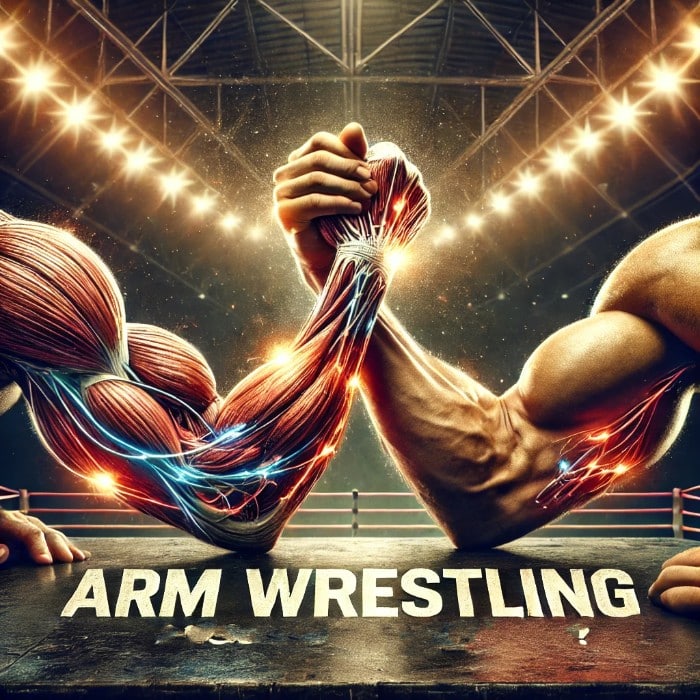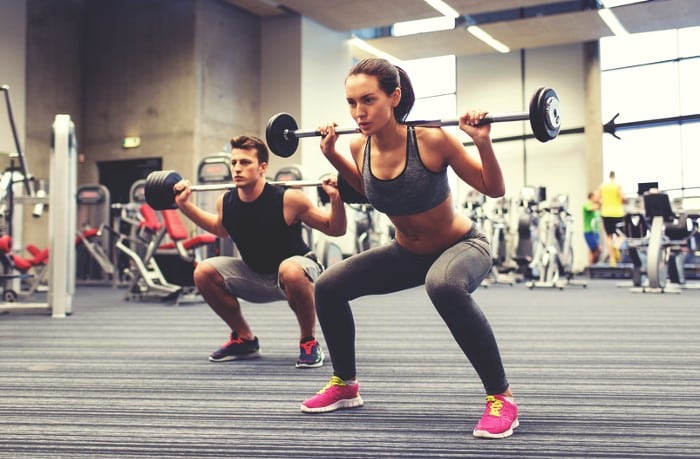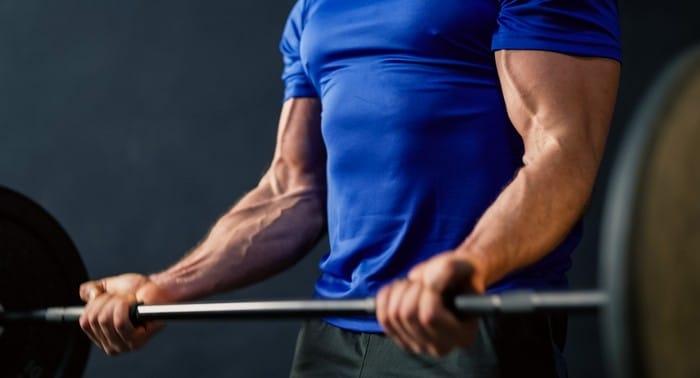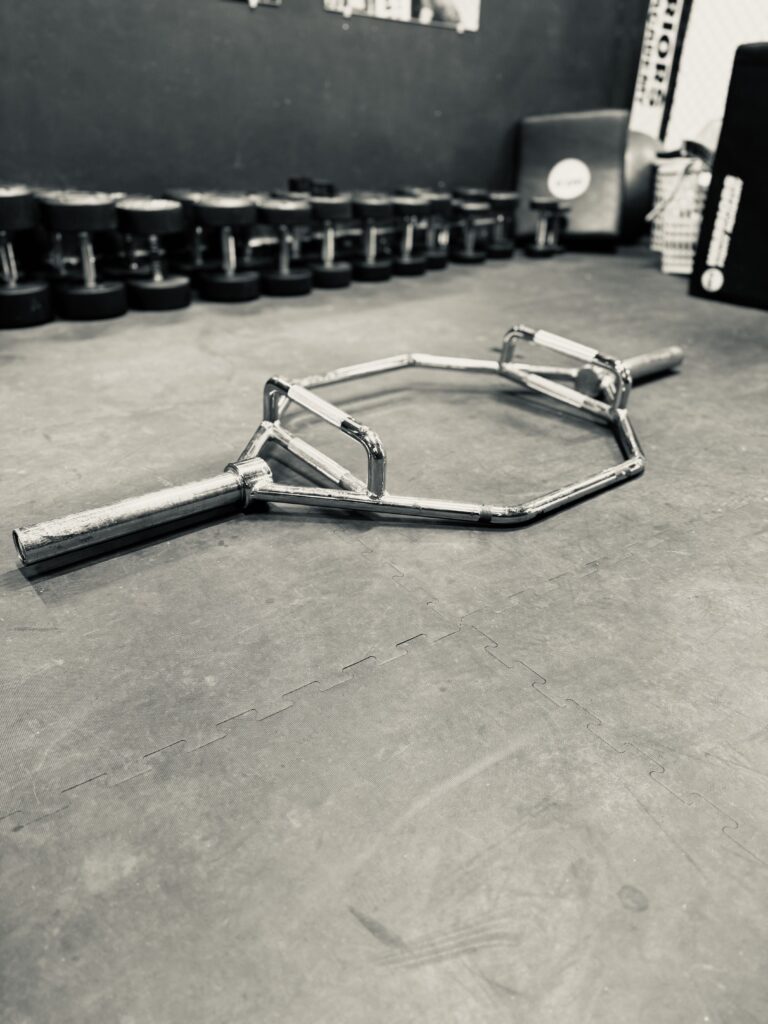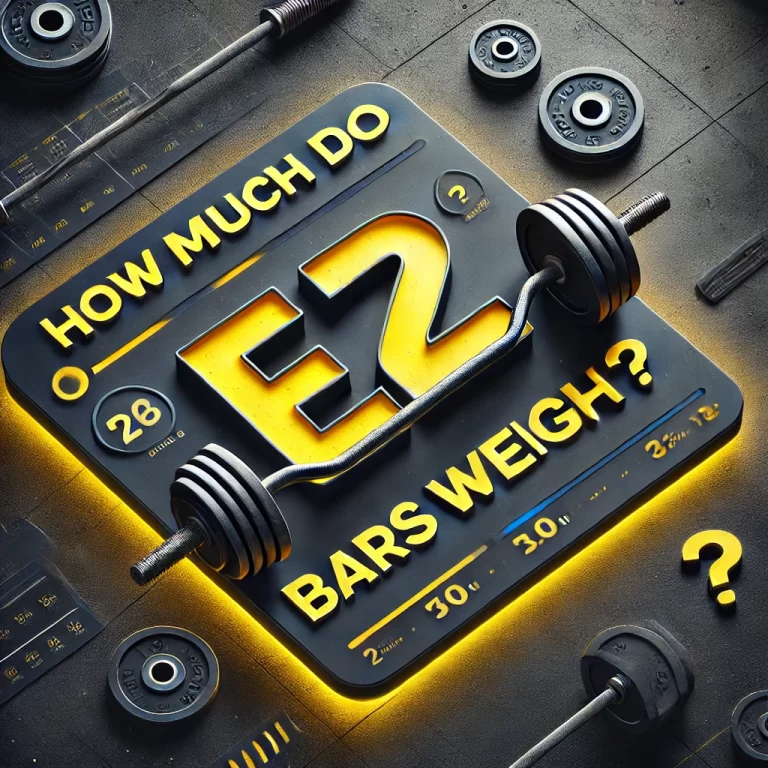What Muscles Are Used In Arm Wrestling?
Arm wrestling is a sport that has become huge over the last several years, generating a wide range of superstars in the process.
Arm wrestling is seen as a sport for ‘alphas’ and is considered the ultimate test of strength. Everybody knows that iconic scene in Predator, where Arnold Schwarzenegger’s Dutch shakes the hand/arm wrestles Carl Weather’s Dillion. It is the most alpha and manly scene in the history of Hollywood and is a scene that inspired many youngsters all over the globe to get into arm wrestling.
Despite people considering arm wrestling to be a test of strength, however, it is more about technique than strength. We’ve seen guys weighing upwards of 400 pounds of muscle mass lose arm wrestling matches to guys 150 pounds lighter than them, all because they assume it’s purely about strength and power.
With guys like Devon Larratt, Larry Wheels, and Michael Todd all making big names for themselves in the sport of arm wrestling, and with several high-profile names getting into the sport, more and more people are showing a keen interest in arm wrestling.
But what muscles are used in arm wrestling and what can you do to improve your form and technique? You’ll find the answers below.
What Muscles Are Used In Arm Wrestling?
When you think of arm wrestling, you likely think of one muscle, and that one muscle is the bicep muscle. Now, don’t get us wrong, the biceps are indeed very useful and effective when it comes to arm wrestling, but many other muscles come into play.
If you search online for clips of arm wrestling, you’ll find plenty of clips of seemingly small guys and gals, challenging much bigger opponents to arm wrestling matches. As the smaller individuals are trained arm wrestlers, they know that technique beats power every single time.
Arm wrestling is not an isolation movement, it is a compound movement that recruits multiple muscles at once during the activity. At the start of the movement, the goal is to rotate your opponent’s arm and almost pull it towards you. This recruits your lat muscles in your back, your deltoids (shoulders) your core, and your pectoral (chest) muscles.
After this movement, your next objective is to pull and so your biceps brachialis and brachii come into play, along with your elbow. That isn’t all, however, your forearms will also need to be recruited, along with flexors in your wrist so that you can rotate your wrist and hopefully pin your arm.
To pin your opponent’s hand and arm, however, you need to use your core to tilt your body and get your body weight behind it. Your core stabilizer muscles and your obliques will do a huge amount of the work for you here.
Is Arm Wrestling A Safe Sport?
All sports can be dangerous, especially if performed incorrectly. If you follow the rules and get your form and technique correct, however, you can minimize the risks. Arm wrestling is no different. Arm wrestling is a very physical sport. Sure, it’s not as physical as martial arts, or wrestling itself, but it is still very physical and there are a lot of risks involved.
If you’re squeamish you might want to skip this part. Over the years we’ve seen arm wrestling on some big stages. We’ve seen Sly Stallone play an arm wrestler in the movie ‘Over the Top’. We’ve also seen arm wrestling as an event at the World’s Strongest Man Strength competition. It was here that we saw a very nasty injury.
In 1995, during the heats, legendary strongman Magnus Samuelson broke the arm of Australian former pro-wrestler, powerlifter, and actor Nathan Jones, in an arm wrestling contest. Samuelson is usually the bigger of his opponents, standing 6ft 7 and weighing upwards of 340 pounds but against 6ft 11, 360-pound Nathan Jones, he was giving up a decent amount of size. Ultimately, however, that didn’t matter.
During the contest, Samuelson broke the arm of the inexperienced Nathan Jones. Jones utilized a side-twisting technique, which is a definite no-no when arm wrestling. There have been many incidents where injuries like this have occurred during an arm wrestling contest, which is another reason to emphasize the importance of technique and form.
Exercises To Help With Arm Wrestling
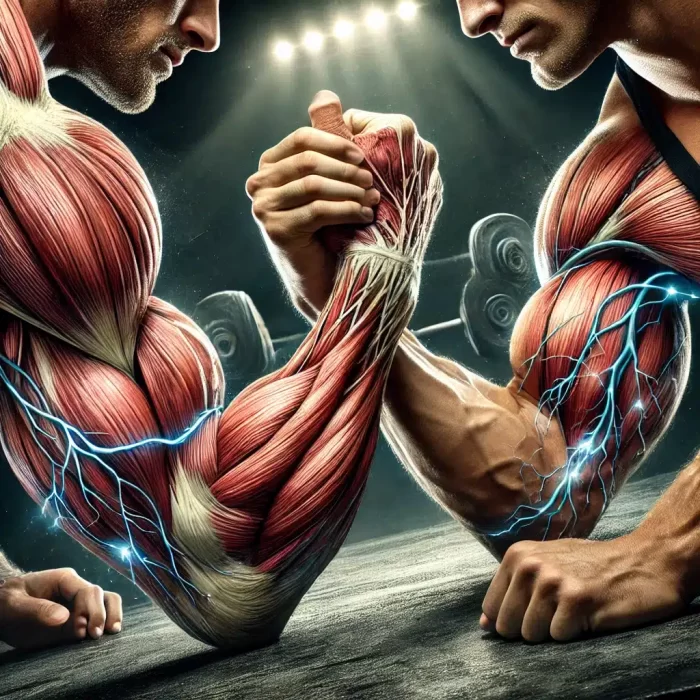
When looking at what muscles are used, primarily it is muscles found in the arms, as well as some located in the back, shoulders, chest, and core. If you’re thinking of becoming an arm wrestler, or if you wish to get better at the sport, there are several exercises you can perform to help. Here’s a look at several exercises to help with arm wrestling.
Preacher Curls
One of the most effective exercises you can perform when it comes to arm wrestling is the preacher curl.
Preacher curls are performed on a preacher curl machine or with an EZ bar or dumbbell on a preacher curl bench. The exercise focuses on the biceps while also hitting your forearms as well, making it ideal for arm wrestling.
Another less obvious benefit is the fact that the exercise is performed on a bench so you will get used to the feeling of having your hands and arms on a bench like you would when using an arm wrestling table.
Wrist Curls
When arm wrestling, having strong wrists is incredibly important. Your wrist flexors are what you will use to pin your opponent’s arm to the table. Not only that, but if you have weak wrists you’ll be more susceptible to a broken wrist. This is where wrist curls prove so useful.
Wrist curls when performed seated will not only help strengthen your wrists, they’ll also help to target the biceps and work your forearms. If you want forearms that would be Popeye to shame, make sure you hit some wrist curls.
Dumbbell Hammer Curls
Dumbbell hammer curls are great for hitting the long head of the biceps, along with your forearms and even working your front delts.
By performing hammer curls with a neutral grip, you can target your biceps brachialis and the brachioradialis in the forearms. With this exercise, progressive overload is the key. You constantly want to be shocking the muscles so that they strengthen and grow. Hammer curls are also beneficial when it comes to your grip, so if you want to enjoy superior grip strength, get hammer curling!
Overhead Triceps Extensions
As well as working on your biceps and forearms, if you want to generate more power for arm wrestling, the triceps should not be ignored. When talking about what muscles are used, the triceps are generally an afterthought, but weak triceps will mean weak and skinny arms in general.
For strengthening your triceps, attach a rope to a high cable pulley and go ahead and carry out a series of overhead triceps extensions. As it is a cable exercise you can isolate the triceps and make them grow. Not only will this strengthen your arms, but it will also make your arms look bigger too, and who wouldn’t want that?
Hanging Towel Pull Ups
Pull-ups are mainly done to strengthen your back, and even though you use some back muscles for arm wrestling, the idea behind this exercise is to strengthen your grip and your wrists.
Attach a towel to a pull-up bar securely and grip it with an overhand grip as you would the bar. Now, focus on performing a pull-up, except, rather than gripping the bar, you’ll be gripping the towel. This is much harder than a standard pull up and it will work on strengthening your grip and your wrists.
General Tips For Arm Wrestling
As well as the exercises we’ve just listed above, there are also a series of different exercises, movements, and things you can do to make yourself a better arm wrestler.
Some general tips for arm wrestling include the following:
Grip Your Opponent’s Hand As High As Possible
One of the most common mistakes that people make when it comes to arm wrestling, is gripping their opponent’s hand too low. Remember, arm wrestling is all about technique and leverage, and the higher you grip your opponent’s hand with your hand, the more leverage you will be able to generate.
Having your hand elevated slightly when compared with theirs, will let you pull harder and produce more leverage, which will of course give you the advantage. Try to grip above their knuckles with your fingers directly over your thumb. You should also keep your wrist straight, as curling it may get you disqualified in an official contest.
Place Your Dominant Foot Forwards
Another very useful tip for anybody looking to get into the sport of arm wrestling is to place your dominant foot forward. If you are right-handed for example, you should place your right foot forwards. This is the opposite of sports such as boxing, where you would lead with your left foot forward if you were right-handed.
To some people, this may seem a little awkward and uncomfortable, but there is a reason for this. By standing with your dominant foot in front of you so that it faces your opponent you can leverage the weight of your torso and your body onto your arm, and pin your opponent, with any luck.
Some arm wrestling matches take place seated. If that’s the case, again, make sure your dominant foot is facing your opponent in front of you.
Curl Your Wrist Inwards
The goal of arm wrestling is of course to pin your opponent’s wrist to the table/pad. For you to do that, you must first weaken your opponent’s wrist. This is where curling your wrist inwards can be so beneficial.
As soon as the match begins, your primary goal should be to weaken your opponent’s wrist as quickly as you can. Slowly rotate your wrist and curl it inwards so that it is facing your shoulder. Your palms should be facing your face.
By curling the wrist in this way, you can bring your opponent’s wrist closer towards you, while simultaneously weakening their grip and strengthening your own. Remember, it is not a race, just take your time and focus on slowly rotating and curling your wrist.
Try To Surprise Your Opponent
Another very simple, yet highly effective tip when it comes to arm wrestling is to try and shock them with a sudden, jerking movement.
Yes, we know we just told you to take your time and pace yourself, but if you are going up against a particularly strong, and stubborn opponent, sometimes it pays to surprise them.
Start slow and controlled, then all of a sudden try and get some momentum by carrying out a sudden jerking movement. Another top tip is to try this technique instantly. As soon as the match begins, try to catch them unaware jerk their wrist, and try to seal the win straight away.
Just be aware that this technique will use a lot of energy, strength, and power, so you may very well find yourself feeling tired and worn out if you fail to pin your opponent. If you know your opponent is stronger, however, this could be your only shot, in which case it may be worth the risk.
Try To Conserve Your Energy
Unless you are going for a quick win, or are trying to surprise your opponent by jerking their arm suddenly, without warning, try to conserve your energy levels during the match.
Rather than jerking your arm, pulling, and trying to force your hand down, take your time and try to pace yourself and conserve your energy instead.
Rather than going on the attack, why not instead focus on defense and try and let your opponent wear themselves out?
If you have the strength, focus on preventing your opponent from pinning your wrist. Let them tire themselves out and once you can sense that their strength levels have decreased and their energy levels have dropped, that’s when you can go on the offense and start getting more aggressive with your tactics.
Try Using The ‘Hook’ Technique
If you come up against an opponent who is equally as strong as you, if the match is going to be very even and you don’t know which way it’s going to go, you could go with the ‘hook’ technique.
This is a very common technique used in arm wrestling, and if used correctly, it can be extremely effective as well. To perform this movement, try to curl your wrist inwards. By doing this, your opponent’s arm will be extended. You will however, need a lot of bicep power to do this, so you’ll need to ensure that you’ve been doing plenty of bicep work in the lead-up to this.
Focus on leaning inwards and positioning your shoulder over your arm, keeping it as close to your body as you can get. Now, explosively try to pull your opponent’s arm down by dragging them towards you. Make sure to keep a firm grip on their wrist for the duration of this exercise, otherwise, your opponent will get the upper hand.
Make Sure You’ve Been Eating Enough
When people talk about arm wrestling, not nearly enough focus and emphasis is placed on diet and nutrition as it is with other sports and activities.
Arm wrestling requires a great deal of arm strength and muscle mass. If you take a look at professional arm wrestlers you will see that they have huge forearms and biceps, and are carrying around a lot of lean muscle mass. As beneficial as exercise is when it comes to building muscle, you can’t build muscle without proper nutrition.
When training as an arm wrestler you need to ensure that you’ve been eating enough protein for muscle growth and recovery, and enough calories for energy.
You will expend a lot of energy during an arm wrestling match, which is one of the main reasons why you should consume plenty of food before an arm wrestling match.
Frequently Asked Questions:
Do triceps help in arm wrestling?
Yes, while triceps are not the main focus, they help stabilize the arm and counteract the opponent’s force when transitioning to different positions during a match.
Is grip strength important in arm wrestling?
Absolutely! Strong forearms and wrist flexors contribute to a firm grip, making it harder for an opponent to manipulate your wrist position.
How can I train for arm wrestling?
Training should focus on wrist curls, hammer curls, pull-ups, resistance band exercises, and grip-strengthening drills to improve endurance and control in a match.
Do leg muscles play any role in arm wrestling?
Surprisingly, yes! Leg and core strength help with balance and stability, allowing arm wrestlers to generate power from a strong foundation.
Is arm length an advantage in arm wrestling?
It depends! A longer arm provides more leverage but requires more force, while a shorter arm can generate quicker power in close-range moves.
How often should I train for arm wrestling?
For best results, train 2-3 times per week, allowing time for muscle recovery. Focus on grip, wrist, arm, and shoulder strength while refining technique.
Final Thoughts:
So, what muscles are used in arm wrestling?
Well, the answer is nearly all of them, especially those in the arms. Arm wrestling is a very technical, complex, and difficult sport that is about so much more than raw strength and power. Arm wrestling is about hand and body positioning, technique, leverage, speed, and power all wrapped into one. If you are looking to get into the sport and want to bring up your skills, hopefully, the info listed above will be of some help to you.
